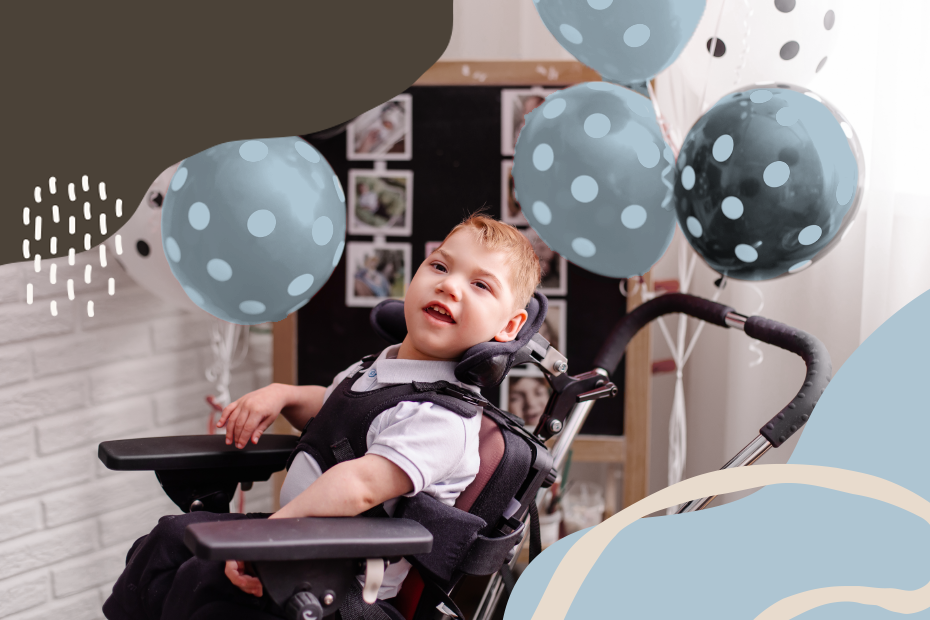Raising children with disabilities, especially children with Spinal Muscular Atrophy (SMA), can be stressful, and at times, evoke feelings you never thought you would experience as a parent. The Unforgotten Families is the voice, advocate and champion of medically fragile children and their families and is here to help provide guidance, advocacy, and insight into the world of raising children with disabilities.
What is Spinal Muscular Atrophy and How Do I Know When My Child Should be Diagnosed?
Spinal Muscular Atrophy is a hereditary disease that affects the central nervous system and can cause muscle weakness leading to the loss in an individual’s ability to walk, breathe, eat/swallow, and communicate.
There are five types of SMA, all of which are diagnosed at different points in an individual’s life and have varying symptoms.
Type 0 SMA is usually diagnosed while the child is still in the womb and has a life expectancy of less than six months. Symptoms may look like:
- Reduced fetal movement
- Joint deformity
Type 1 SMA symptoms begin showing in children from ages one month to six months. An individual with Type 1 SMA has a life expectancy of less than two years and may experience some of the following symptoms:
- Abnormal breathing
- Loss in muscle tone
- Little to no head control
- Difficulty feeding, swallowing, coughing
This type of SMA (Type 1) can also be known as Werdnig-Hoffmann disease and is the most common form of Spinal Muscular Atrophy.
According to Boston Children’s, “Type 2 is an intermediate form of SMA. Children with this type may sit without support at some point but cannot walk on their own. Symptoms typically start between 6 and 18 months of age. Depending on the severity of symptoms, children with type 2 may have a normal life span.”
Type 3 and 4 SMA are similar in that they are both known to be more “mild” than other types of SMA and are commonly diagnosed later in adolescence or into adulthood. Individuals with Type 3 and 4 SMA are, “initially able to walk, but have increasingly limited mobility as they grow and eventually, many need to use a wheelchair.” – CURE SMA
If you feel like your child may not be meeting their developmental milestones and may be showing symptoms of Spinal Muscular Atrophy, The Unforgotten Families highly recommends you consult your child’s pediatrician or a healthcare professional. A healthcare professional may recommend a blood test or genetic test, to determine if your child has Spinal Muscular Atrophy.
What Does Raising a Child with Spinal Muscular Atrophy Look Like?
This is a complicated question and there is no one answer for any one family. Children with Spinal Muscular Atrophy, though they share a disease, are unique and should be treated with a care plan special to them and what is best for their physical and mental health.
Raising a child with a disability can come with added responsibility. Although there is no cure, numerous resources and treatments are available to help your loved one become their best self.
An individual with SMA may:
- Use a wheelchair
- Not be able to consume solids or liquids on their own without assistance or monitoring
- Have difficulty breathing
- Take medications
- Require Physical, Speech or Occupational Therapy
How Does Playtime Look Different and Will All of My Children Be Able to Interact
Children with Spinal Muscular Atrophy and able-bodied children are still able to enjoy their time together through a variety of fun playtime activities!
- Time spent in the pool
- Reading a book
- Music therapy
- Jigsaw puzzles
- Outdoor sports, with the help of an adult and accessible playground
It is important to remember that though raising a child with a disability requires a lot of change, encouraging your children to be accepting of one another and adjusting to include all family members will promote a healthy and happy home.
What Resources Are Out There
A lot! Spinal Muscular Atrophy support groups can be found through your local Facebook pages or Neighborhood Apps. CURE SMA is also a great resource for families looking for updated resources, research, events, and support groups nearby.
Resources
